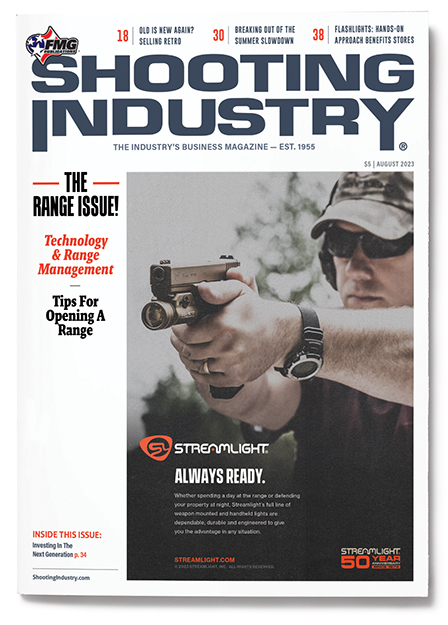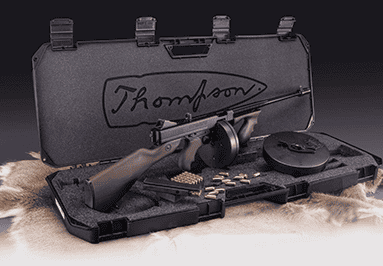Shocking Profitability
In Paper Targets
Most range owners overlook the most basic of shooting essentials — the paper target — since it’s a very low-price item when compared to ammunition and range time. Well, we’ve discovered some surprising opportunities hidden in that cheap bull’s-eye.
With some simple sales training, you should easily be able to double your target sales leading to some serious increases in profitability at the end of the year to the tune of $50,000 (or more) for some high-volume operations. That’s $50,000 cash profit, not revenue. So, what’s actually happening here?
Reshaping The Reference Point
In 2022, I studied two range locations and calculated the average targets sold per customer visit. It was almost exactly one-to-one (totals targets divided by total range visits). This means one target is being sold per one customer visit. It’s not a perfect metric since members tend to bring their own targets, but stick with me.
I also listened to some of the conversations at the check-in desk. Most range officers asked customers, “Do you need a target?” Well, unsurprisingly, the customer did need a target — exactly one — so one target was rung up. If a large target sells for $2.50 and costs less than $0.50, it’s a $2 profit for each target heading out on the range.
What was subconsciously happening in this typical sales transaction is what psychologists call “anchoring.” Anchoring simply refers to setting a reference point. You have set the expectation most people shoot one target at the range. The range officer asked the customer if they wanted one target and they replied yes, assuming they needed only one.
We’ve found a very easy way to flip the narrative. For example, if the range officer asks, “Do you need some targets? Most people shoot three targets. How ’bout I start you with three, and if you need another one, let me know.”
You have immediately set the reference point an average person shoots three targets per range visit. No one wants to be perceived as out of the norm (or a rookie), so they buy three targets resulting in an extra $4 in profit for one transaction. For a range handling more than 25,000 range visits per year, this sale only needs to be landed 25% of the time to make an extra $25,000 in profit. If you can get this number up to every other sale, an extra $50,000 in profit is generated.
Take Advantage Of Modern Tools
Although this is a very simple concept, in theory, it must be taught and frequently practiced by your staff. Even a great idea is worthless unless it is successfully applied.
Luckily, modern software tools — thanks in large part to artificial intelligence — have made the creation of training content very easy to generate and accessible to staff who live in the world of podcasts and captioned YouTube.
One particular tool I’ve gravitated toward is text extraction from video or audio files using Rev.com. Most of you are familiar with voice dictation, which has been around for a while, but the new magic is the extraction of text from video or audio clips generated on a phone. Every staff member learns a bit differently. Visual learners like to see pictures and video, while auditory learners like to hear and listen.
The Rev.com automated transcription tools make it easy to satisfy both groups with very little extra work, plus they have their own app to make the content upload even easier.
Here’s an example of how this works with audio: The range manager compiles some notes and opens a voice-recording app on their phone or computer. They hit “Record” and start talking like they would teach the lesson in a meeting. Once the recording is saved, it is uploaded it to Rev.com, which will extract the audio and convert it to a transcript.
You can then send a staff email with the audio file attached (just like a podcast) as well as the transcript. What’s great about this is just your voice can be recorded anytime (like when driving to/from work or waiting for a flight).
It’s also effective with video: The range manager schedules a virtual staff meeting (using Google Meet or Zoom) and records the meetings. That video file can be uploaded to Rev.com, which extracts the transcript just like before, except now there is a captioned video, audio podcast and the training transcript that can be emailed to everyone.
Once you get familiar with the tools, these short training clips can be very effective, especially knowing the average attention span for viewers online tends to be 2–3 minutes.
Measuring Effectiveness
dustry trade show without hitting a specialized point-of-sale (POS) solution for a range and retail operation. POS solutions were covered in Shooting Industry last year by Hank Yacek (“Point Of Sale Systems: They Got The Name Wrong!” April 2022), but I want to focus on one simple feature they all offer — reporting.
As long as the system can export the number of range visits you had last week (and the number of targets sold during that period), you can easily create a way to measure how many targets the staff is selling per visit. Just divide the two numbers.
When we first started this initiative, we were at a straight one-to-one ratio: We were averaging one target per customer visit. This sounds low, but to simplify the measurement we grouped all of the visitors together (members and non-members).
Most of our members bring their own targets, and most non-members purchase more than one target, but complicating the calculation doesn’t help anyone (and the trend should still be apparent). For the hard-sell members, we have had excellent luck offering the seasonal targets from Gunfun.com. Not many people are printing their own Valentine’s Day targets, but they do sell!
After training staff on this anchoring method, you should start to see that ratio rise, like 1.5 to 1, 2 to 1, etc., especially if they are motivated by an incentive.
For a range handling more than 25,000 range visits per year, this sale only needs to be landed 25% of the time to make an extra $25,000 in profit.
“Let’s Start With Two …”
This sales technique isn’t specific to targets — it works just as well on ammunition — but the target example is the easiest to teach, track and incentivize employees.
Once you have this concept down and staff fully trained, modify the script to say: “Most people shoot two boxes of 9mm. How ’bout I start you with two and if you need another one, let me know.” It’s not a hard adjustment, and ammunition can be even more profitable than paper.






